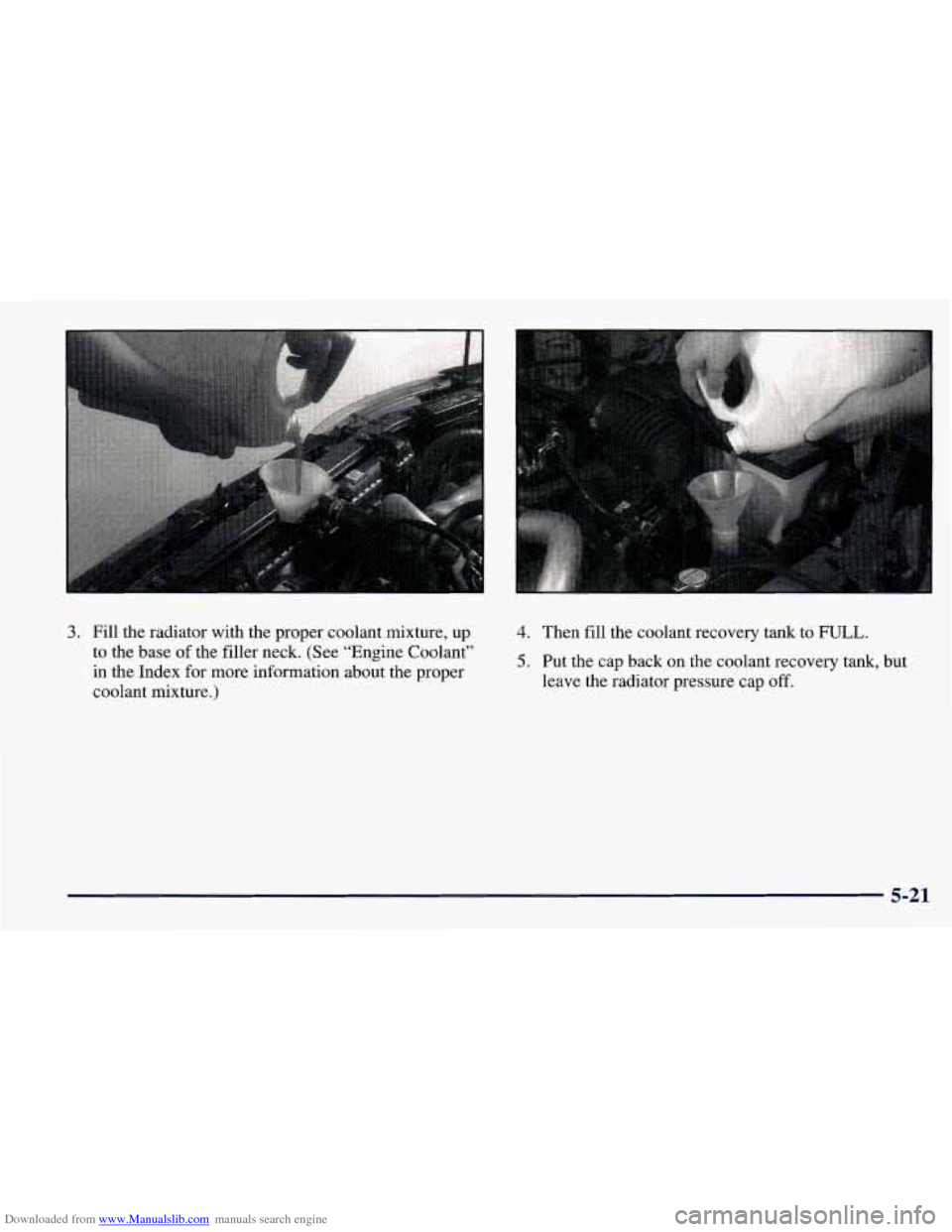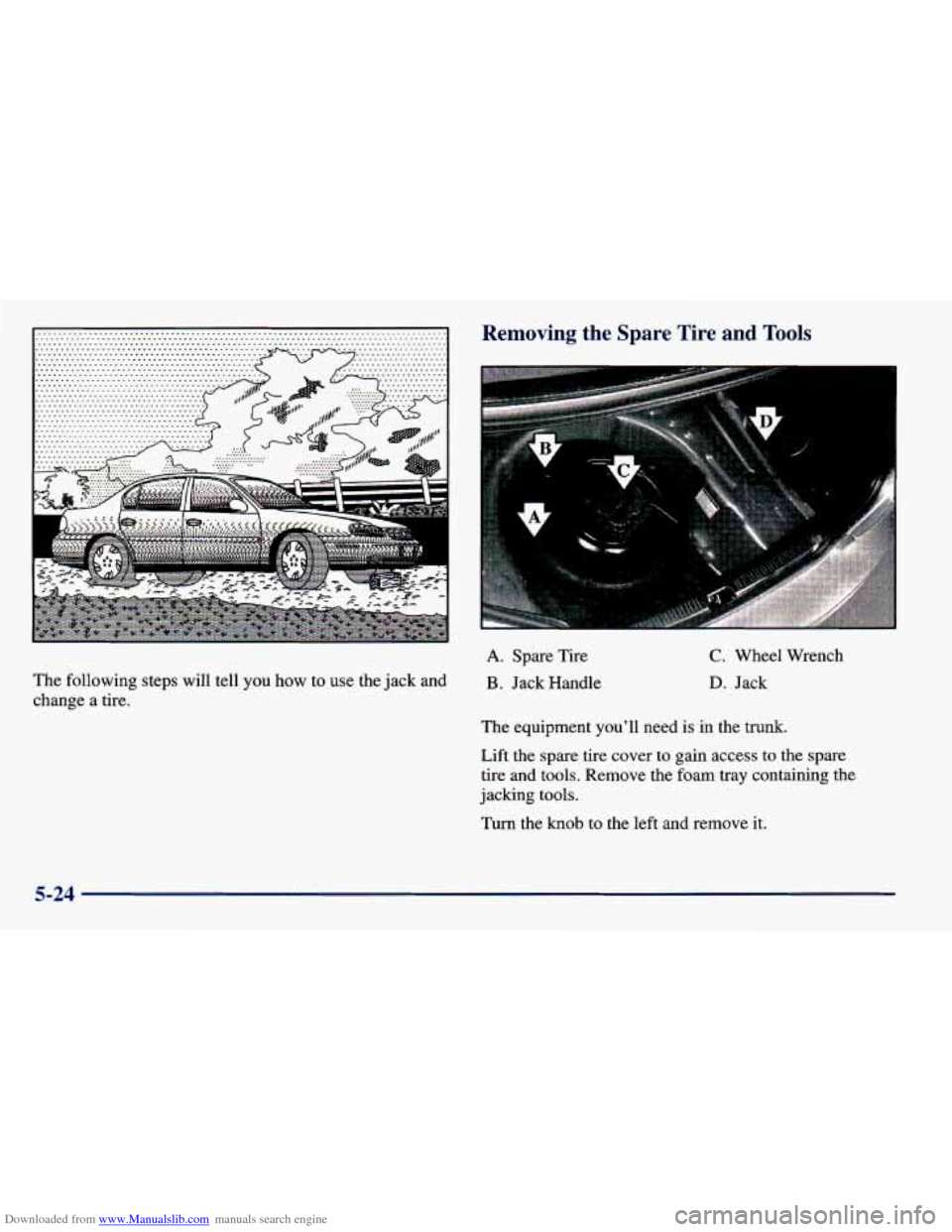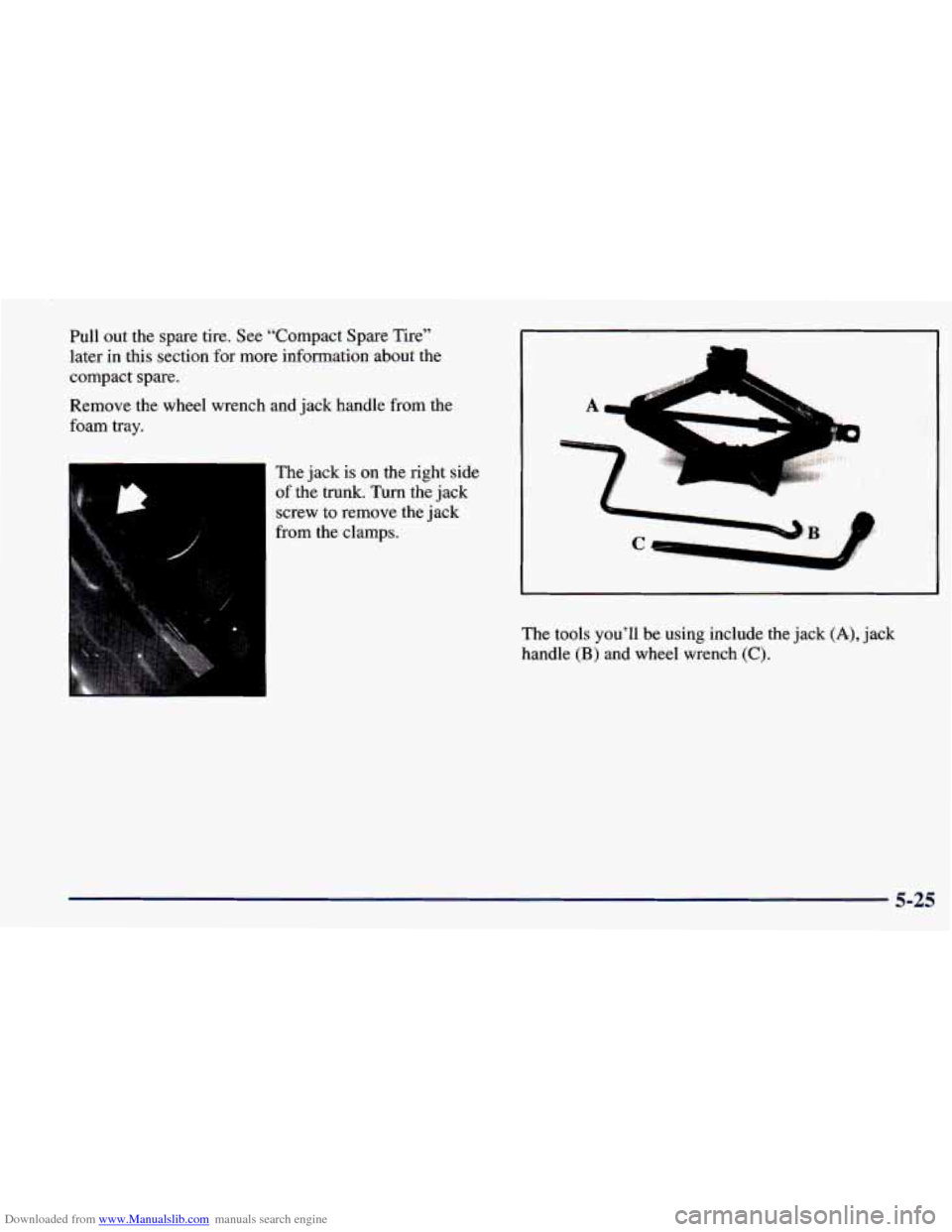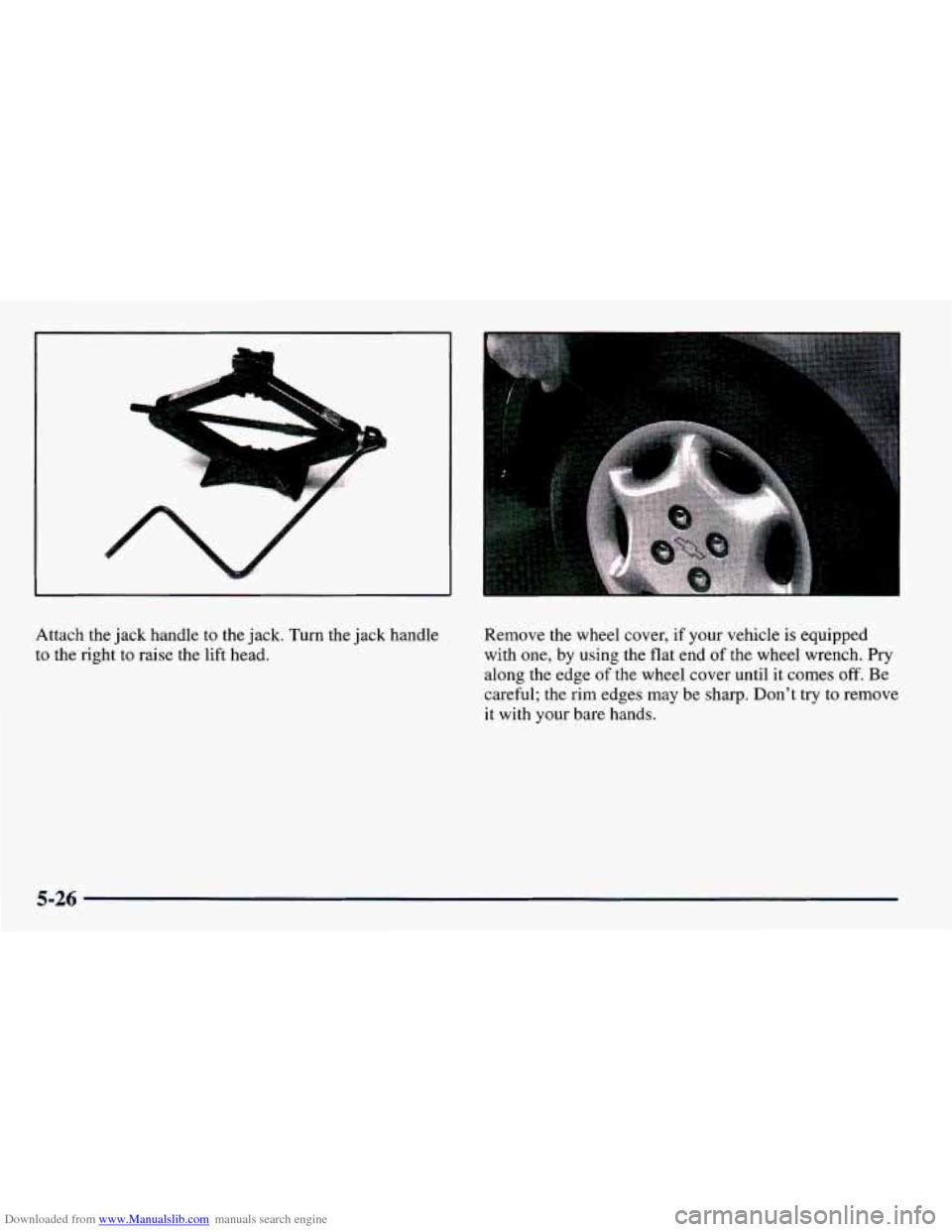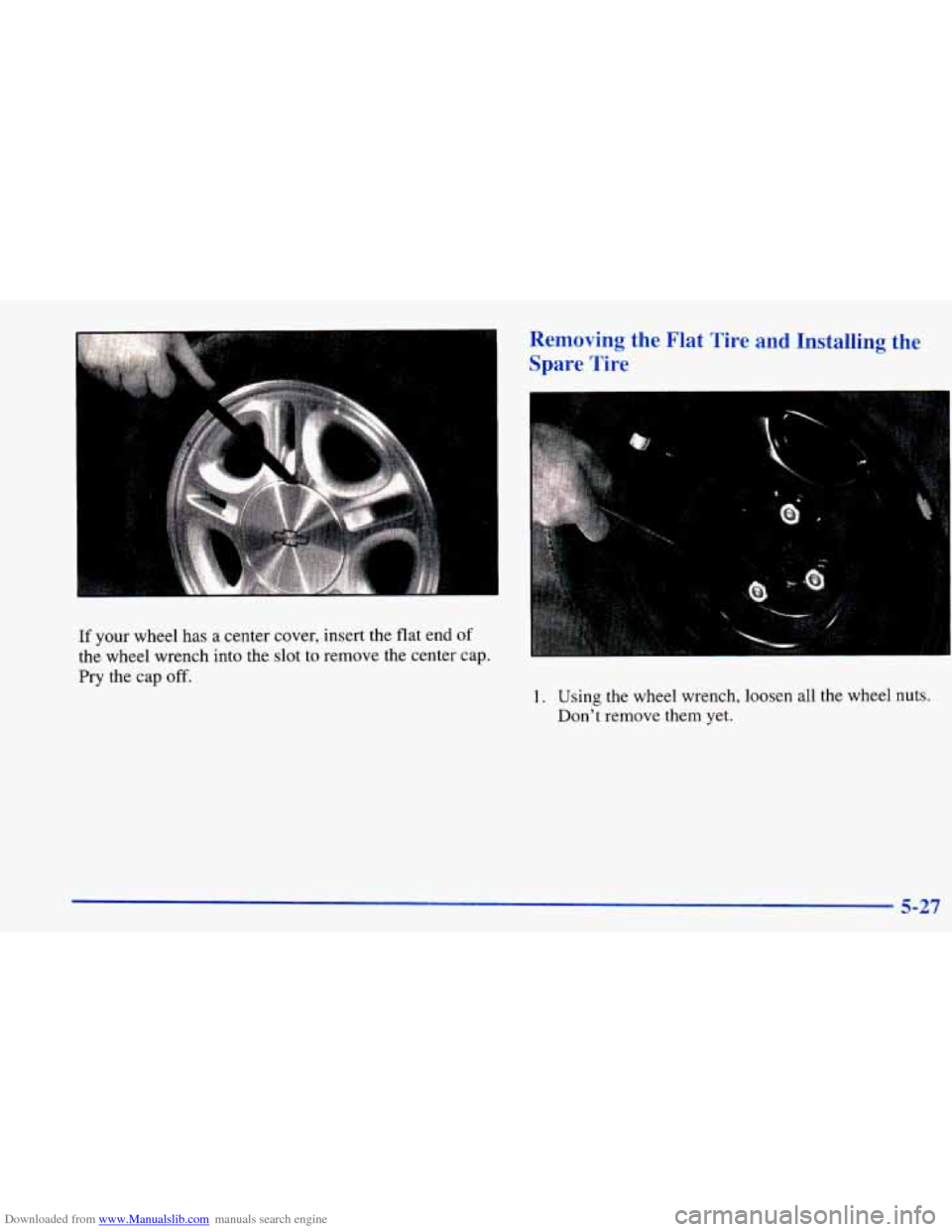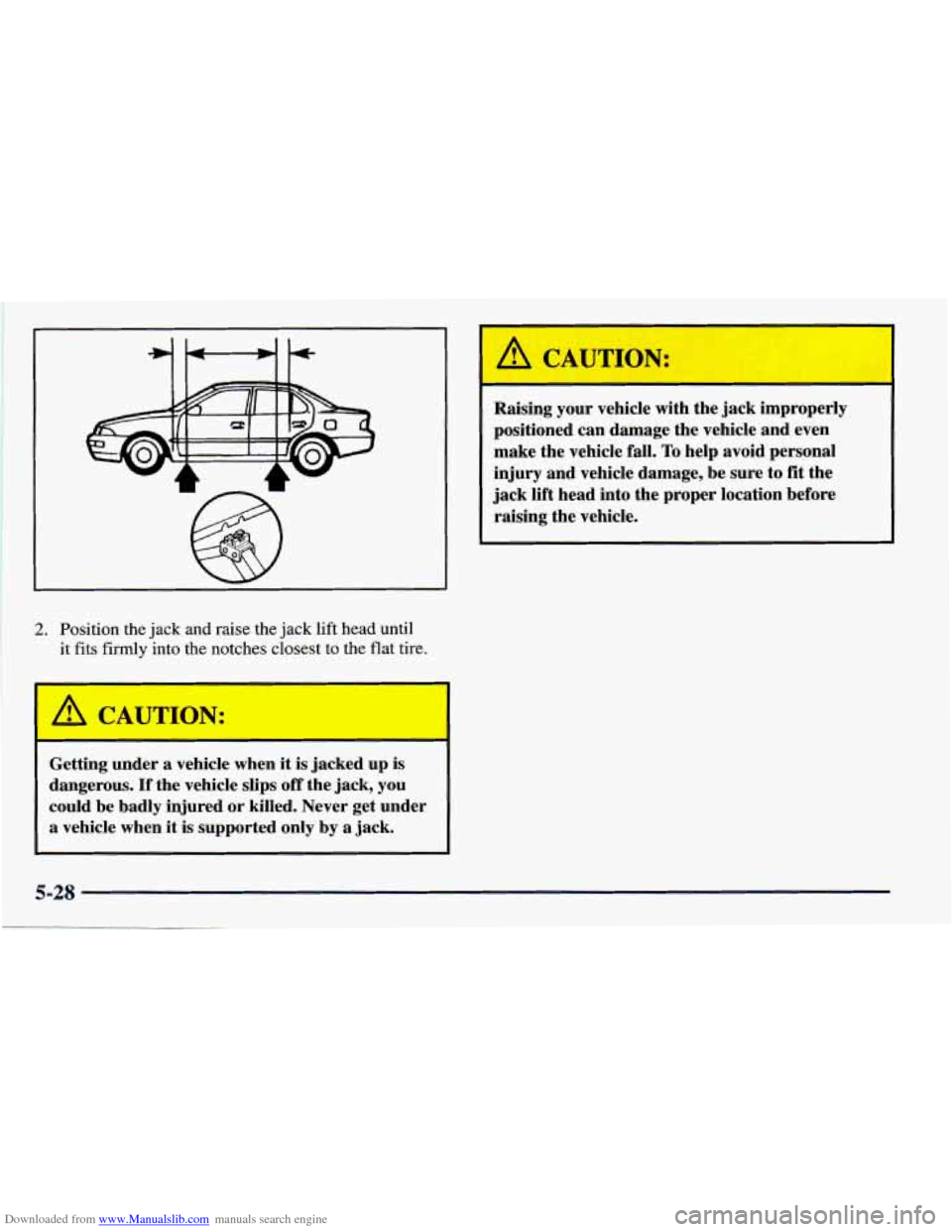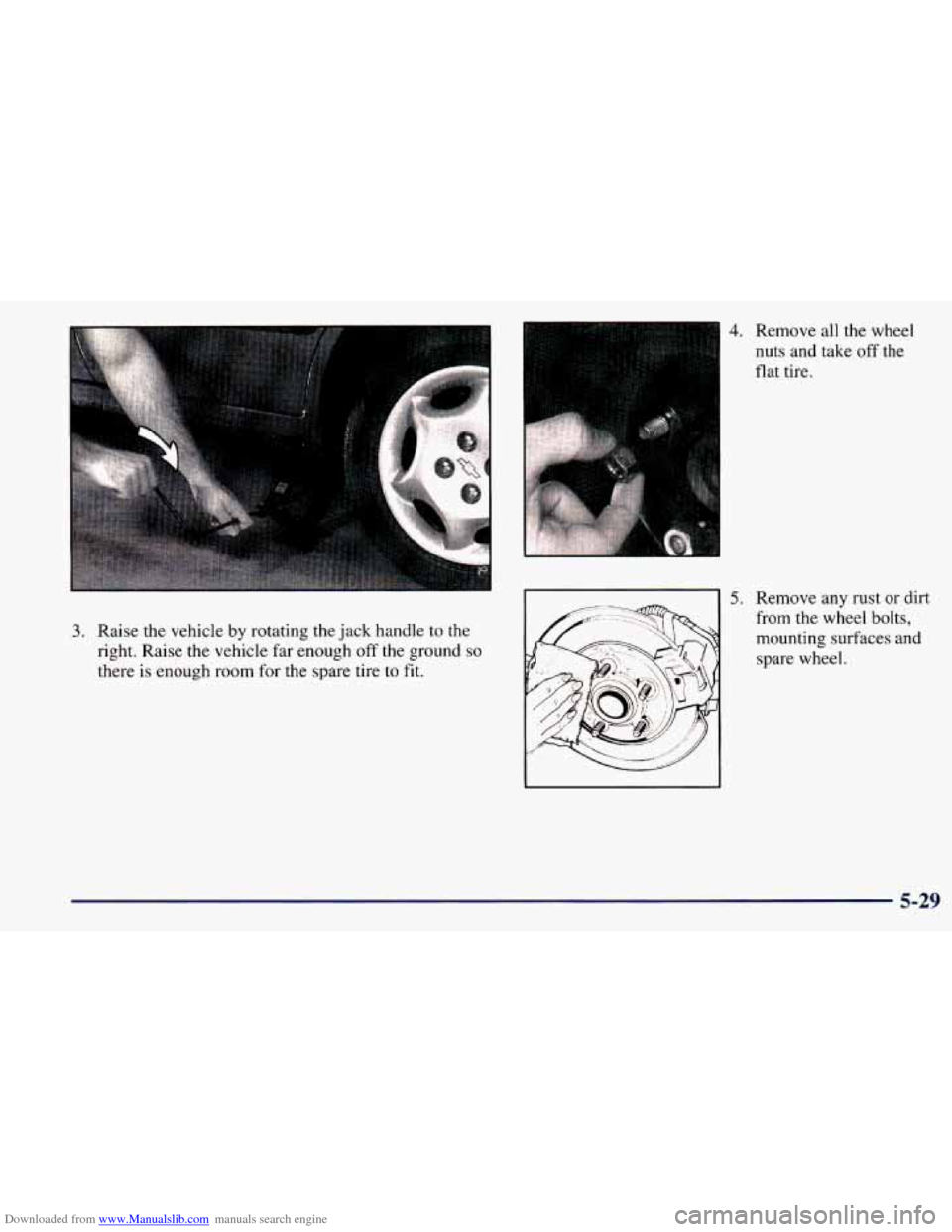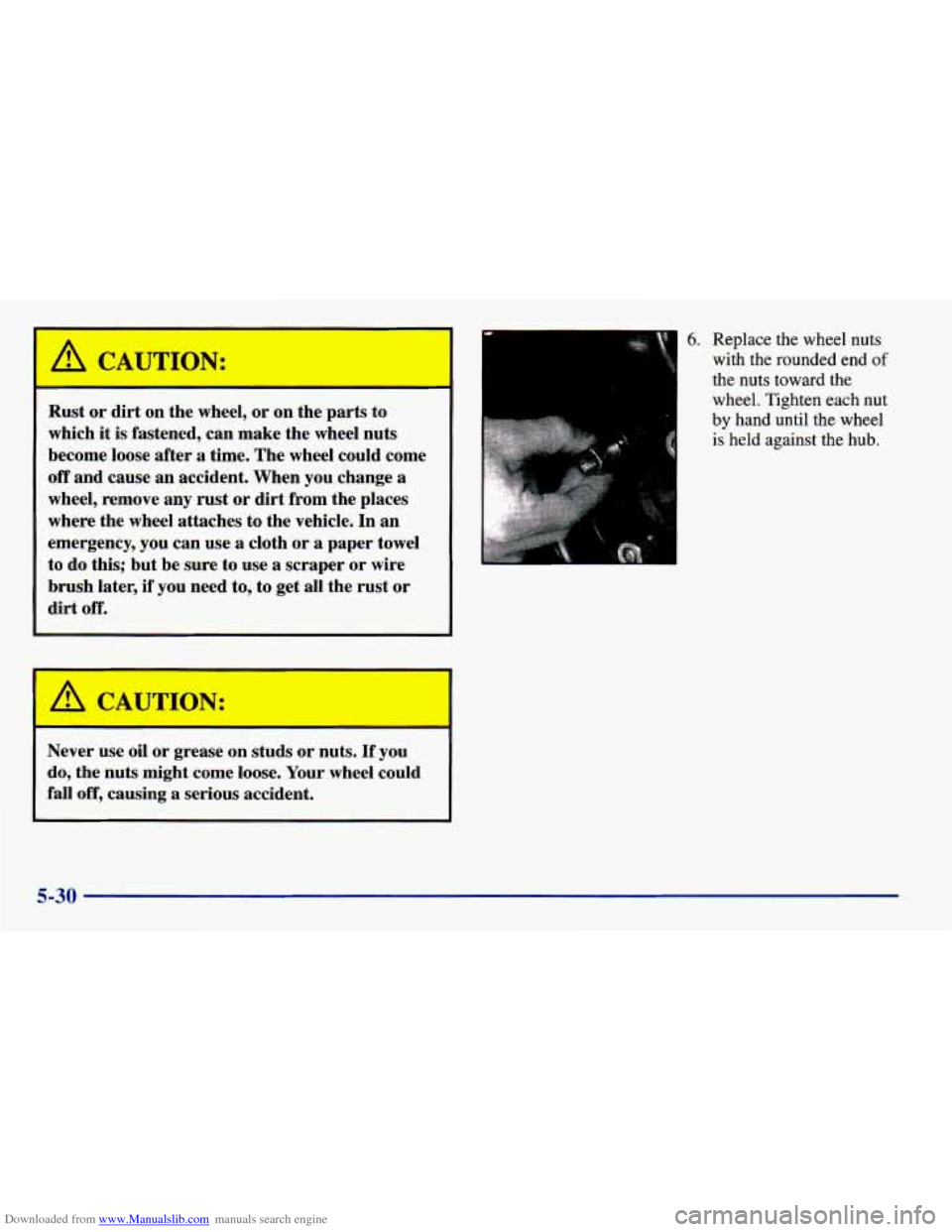CHEVROLET PRIZM 1998 3.G Owners Manual
PRIZM 1998 3.G
CHEVROLET
CHEVROLET
https://www.carmanualsonline.info/img/24/8259/w960_8259-0.png
CHEVROLET PRIZM 1998 3.G Owners Manual
Trending: coolant reservoir, battery location, oil pressure, height, trunk, instrument panel, hood release
Page 211 of 364
Downloaded from www.Manualslib.com manuals search engine 3. Fill the radiator with the proper coolant mixture, up
to the base of the filler neck. (See “Engine Coolant”
in the Index for more information about the proper
coolant mixture.) 4. Then fill the coolant recovery tank to FULL.
5. Put the cap back on the coolant recovery tank, but
leave the radiator pressure cap
off.
5-21
Page 212 of 364
Downloaded from www.Manualslib.com manuals search engine 6. Start the engine and let it run until you can feel the
upper radiator hose getting hot. Watch out for the
engine cooling fans.
7. By this time, the coolant level inside the radiator
filler neck may be lower. If the level is lower, add
more of the proper coolant mixture through the
filler neck until the level reaches. the base
of the
filler neck.
8. Then replace the pressure cap. At any time during
this procedure if coolant begins to
flow out of the
filler neck, reinstall the pressure cap. Be sure the
arrows on the pressure cap line up like this.
5-22
Page 213 of 364
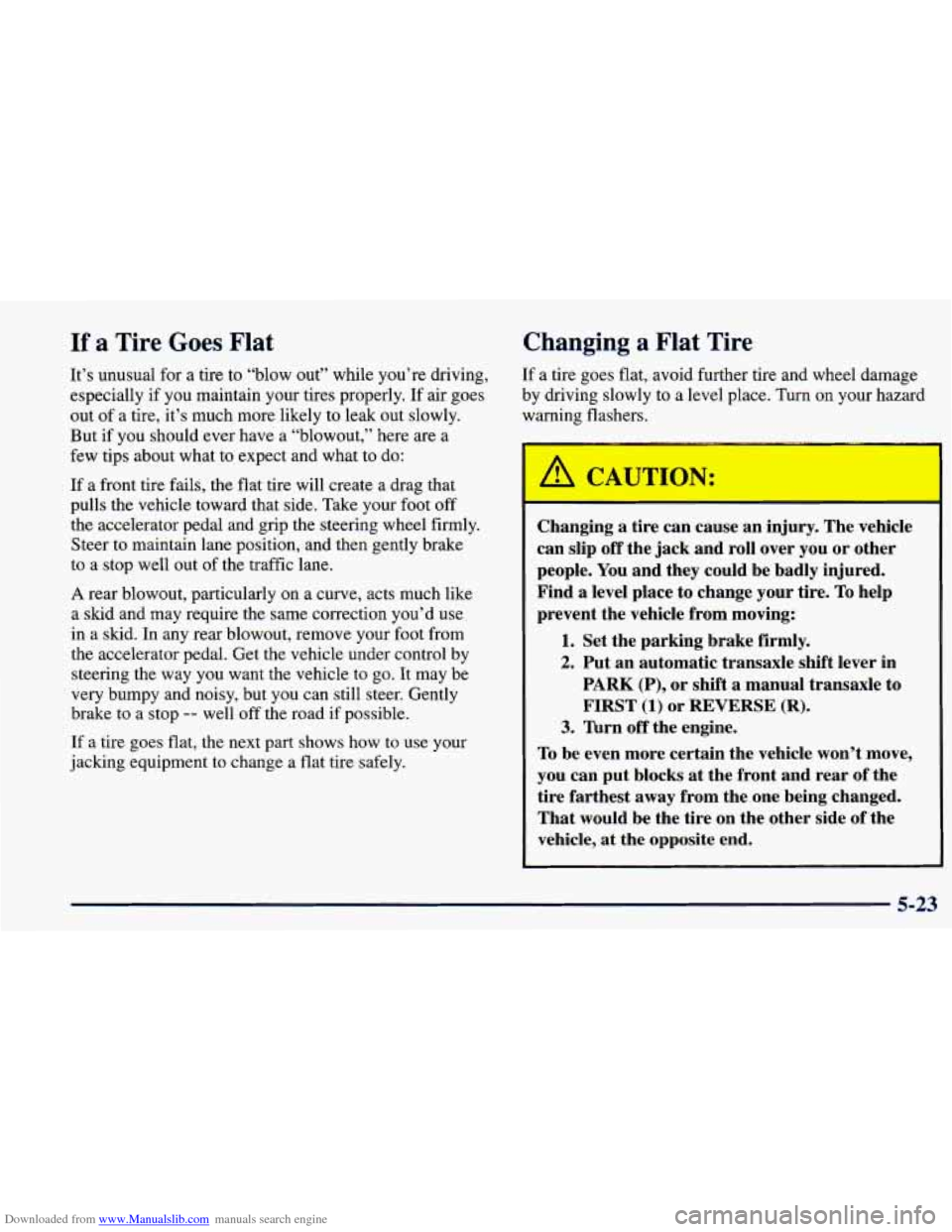
Downloaded from www.Manualslib.com manuals search engine If a Tire Goes Flat
It’s unusual for a tire to “blow out” while you’re driving,
especially if you maintain your tires properly. If air goes
out
of a tire, it’s much more likely to leak out slowly.
But if you should ever have a “blowout,” here are a
few tips about what to expect and what to do:
If a front tire fails, the flat tire will create a drag that
pulls the vehicle toward that side. Take your foot off
the accelerator pedal and grip the steering wheel firmly.
Steer to maintain lane position, and then gently brake
to
a stop well out of the traffic lane.
A rear blowout, particularly on a curve, acts much like
a
skid and may require the same correction you’d use
in a skid. In any rear blowout, remove your foot from
the accelerator pedal. Get the vehicle under control by steering the way you want the vehicle to
go. It may be
very bumpy and noisy, but you can still steer. Gently
brake to a stop
-- well off the road if possible.
If a tire goes flat, the next part shows how to use your
jacking equipment to change a flat tire safely.
Changing a Flat Tire
If a tire goes flat, avoid further tire and wheel damage
by driving slowly to a level place. Turn on your hazard
warning flashers.
Changing a tire can cause an injury. The vehicle
can slip
off the jack and roll over you or other
people. You and they could be badly injured.
Find a level place to change your tire. To help
prevent the vehicle from moving:
1. Set the parking brake firmly.
2. Put an automatic transaxle shift lever in
PARK
(P), or shift a manual transaxle to
FIRST
(1) or REVERSE (R).
3. lbrn off the engine.
To be even more certain the vehicle won’t move,
you can put blocks at the front and rear of the
tire farthest away from the one being changed.
That would be the tire on the other side of the
vehicle, at the opposite end.
5-23
Page 214 of 364
Downloaded from www.Manualslib.com manuals search engine The following steps will tell you how to use the jack and
change a tire.
Removine the Spare Tire and Tools
A. Spare Tire
B . Jack Handle
C. Wheel Wrench
D. Jack
The equipment you’ll need is in the trunk.
Lift the spare tire cover to gain access to
the spare
tire
and tools. Remove the foam tray containing the
jacking tools.
Turn the knob to the left and remove it.
5-24
Page 215 of 364
Downloaded from www.Manualslib.com manuals search engine Pull out the spare tire. See “Compact Spare Tire”
later in this section for more information about the
compact spare.
Remove the wheel wrench and jack handle from the
foam tray.
The jack is
on the right side
of the trunk. Turn the jack
screw
to remove the jack
from the clamps.
The tools you’ll be using include the jack
(A), jack
handle
(B) and wheel wrench (C).
5-25
Page 216 of 364
Downloaded from www.Manualslib.com manuals search engine c
Attach the jack handle to the jack. Turn the jack handle
to the right to raise the lift head. Remove
the wheel cover, if your vehicle is equipped
with one, by using the flat end
of the wheel wrench. Pry
along the edge of the wheel cover until it comes off. Be
careful; the rim edges may be sharp. Don’t try
to remove
it with your bare hands.
5-26
Page 217 of 364
Downloaded from www.Manualslib.com manuals search engine Removing the Flat Tire and Installing the
Spare Tire
If your wheel has a center cover, insert the flat end of
the wheel wrench into the slot to remove the center cap.
Pry the cap off.
1. Using the wheel wrench, loosen all the wheel nuts.
Don’t remove them yet.
5-27
Page 218 of 364
Downloaded from www.Manualslib.com manuals search engine I
2. Position the jack and raise the jack lift head until
it fits firmly into the notches closest to the flat tire.
1 A CAUTIOI.:
Getting under a vehicle when it is jacked up is
dangerous. If the vehicle slips off the jack, you
could be badly injured or killed. Never get under
a vehicle when it is supported only by a jack. Raising
your vehicle with the jack improperly
positioned can damage the vehicle and even
make the vehicle fall.
To help avoid personal
injury and vehicle damage, be sure to
fit the
jack lift head into the proper location before
raising the vehicle.
5-28
Page 219 of 364
Downloaded from www.Manualslib.com manuals search engine 3. Raise the vehicle by rotating the jack handle to the
right. Raise
the vehicle far enough off the ground so
there is enough room for the spare tire to fit.
4. Remove all the wheel
nuts and take off the
flat tire.
5. Remove any rust or dirt
from the wheel bolts,
mounting surfaces and
spare wheel.
5-29
Page 220 of 364
Downloaded from www.Manualslib.com manuals search engine A CAUTION:
Rust or dirt on the wheel, or on the parts to
which
it is fastened, can make the wheel nuts
become loose after
a time. The wheel could come
off and cause an accident. When you change a
wheel, remove any rust or dirt from the places
where the wheel attaches to the vehicle. In an
emergency, you can use
a cloth or a paper towel
to do this; but be sure to use a scraper or wire
brush later,
if you need to, to get all the rust or
dirt
off.
Never use oil or grease on studs or nuts. If you
do, the nuts might come loose. Your wheel could
fall
off, causing a serious accident.
6. Replace the wheel nuts
with the rounded end
of
the nuts toward the
wheel. Tighten each
nut
by hand until the wheel
is held against the hub.
5-30
Trending: maintenance schedule, air condition, wiring, wiper size, turn signal bulb, oil level, engine
